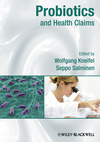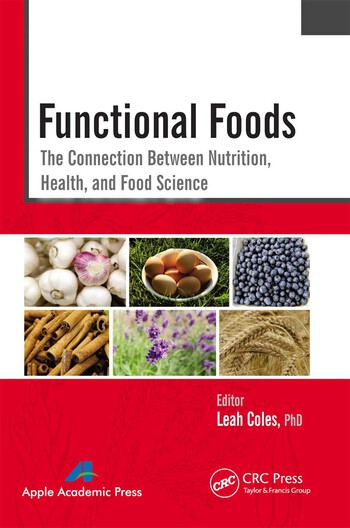Soyfoods Soar on Health and Taste

The soybean has definitely evolved from its stereotypical days as an inexpensive meat filler and animal feed. Today, soyfoods such as burgers and beverages have moved out of small niche natural stores into the mainstream market.
Last September, Good Housekeeping, a popular consumer magazine, published results from a taste test study it conducted. The staff recommended seven favorite soyfoods: meatless or chicken-free nuggets, soyburgers, black soybeans, chocolate soymilk, cold soy cereal, soy nuts and green soybeans.
With the promise of soy's health benefits and the ongoing positive press that soy enjoys, soyfood consumption should continue to grow. Manufacturers' sales of soyfoods are projected to top $6.9 billion in 2005, according to Soyfoods: Trends and Developments, a study from Business Communications Co. Inc., Norwalk, Conn. Even the soy ingredient market, which includes different types of soy protein, soy fiber and soy isoflavones, is projected to increase from $523.3 million in 2000 to $659.2 million in 2005.
Simply adding soy ingredients, such as soy protein and soy isoflavones, to any food will not increase sales. According to focus group studies by a flavor supplier, consumers have strong opinions about what kinds of food products are appropriate for soy addition. Power bars, veggie burgers and breakfast drinks were the top consumer choices. Yogurt, lowfat yogurt, frozen yogurt and meal supplement beverages followed closely behind.
In creating these soy-based foods, formulators need some basic soy ingredient know-how.
Milking It
The latest figures show that overall sales of soymilk beverages grew nearly 50% in 2000. Refrigerated soymilk grew from 13% of the market to 30%, according to Soyatech Inc., Bar Harbor, Maine.One common complaint related to soymilk and soy-based beverages is their beany flavor. Odwalla Inc., Half Moon Bay, Calif., overcomes this challenge with its latest product, OdwallaMilk. Introduced last month, OdwallaMilk is a blend of organic soy, basmati rice and oat milks.
"The challenge behind OdwallaMilk was to combine the right proportion of soybeans to oats and rice so as not to be overpowering, then adding fruit notes for sweetness, including peach, mango and banana," reports Barr Hogen, creative chef at Odwalla. The beverage, available in original and chocolate flavor, supplies 33 mg and 22 mg of soy isoflavones, respectively.
Touting the soy isoflavone content has its advantages. "Many consumers associate soy with a healthy lifestyle and potential health benefits. Post-menopausal women are most aware of soy isoflavones in particular because they are part of the family of phyto-estrogens," notes Brent Flickinger, Ph.D., nutrition research scientist for a soy isoflavone and soy protein supplier. "Bone health and mid-life transition quality of life issues are most important to menopausal women and are reflected in the considerable number of dietary supplements containing isoflavones in the marketplace aimed at these consumers."
Most soy beverages attribute isoflavone content to the natural amount present in the soy base. Other soy beverages fortify with additional soy isoflavone extracts. When fortifying, total isoflavone solubility may be of concern. Soy isoflavone concentrates may require binders and an emulsifier or homogenization.
Soymilk and soy-based beverages also contain additional soy protein, which can be added in various forms. For beverages, soy protein isolates and concentrates are the most commonly used.
"There are numerous isolated soy proteins with varying viscosity profiles to help provide the desired consistency in a finished beverage," says Russ Egbert, Ph.D., director of protein applications research for a soy isoflavone and soy protein supplier. "Soy shakes with a smoothie-like viscosity require a high viscosity protein, whereas a high protein shake with the consistency of milk would require a very low viscosity product. Juice-based beverages require special stabilization, the preferred stabilizer being pectin; homogenization is critical in this process."
Egbert points out that, to date, there are no soy proteins that will produce a clear-based liquid beverage. "You can produce a beverage that is slightly cloudy with low levels of soy protein. Clear beverages would require highly hydrolyzed protein products (currently there are no commercial products) and there is no evidence to support the heart health benefits with a highly hydrolyzed soy protein product," he says.
Soy proteins do contribute some beany flavor when added to beverages, however, work continues in soy processing to improve flavor. In addition, the flavor industry offers various masking flavors for soy beverages. "There is also a move in the soy protein market (for beverages) to include masking flavor technology in the powdered soy proteins," notes Egbert. "This should make it easier for beverage manufacturers to produce high quality soy-based products."
Where's the Beef?
New soy-based meat alternatives continue to appear on market shelves from companies such as Worthington Foods, Boca Burger, Lightlife and Yves. They resemble meat, poultry or fish products in taste, texture and appearance. Original soy meat alternatives were made from soy flour, and today, with textured soy flour, soy concentrate, soy protein isolate or a combination of all."There are several forms of soy proteins that are used in meat alternative products," says Egbert. "Vegetarian patties and sausages can contain textured soy flour, textured soy protein concentrates and isolated soy proteins. Frankfurter products will contain an isolated soy protein product that is responsible for the textural characteristics of the product."
Soy protein isolates and concentrates add protein to meat alternatives, but also serve functional purposes. Concentrates bind water and hydrate meat products. In coarsely ground meat, soy protein concentrates help retain moisture through the freeze/thaw cycle and reheating.
The challenge in meatless products is achieving the appropriate texture and flavor, notes Egbert. Flavors must be made from non-meat materials. Reaction flavor technology has allowed for the development of improved flavors. New technologies are emerging for producing textural characteristics that are very similar to meat. "It is our belief that in the next several years, consumers will see improved meat alternative products and a wider variety of products on the supermarket shelves," he observes.
Bars, Breads and Cereals
Soy protein and isoflavones are attractive selling points in nutrition bars and staples such as bread and cereal. Soy isoflavones are generally heat-stable during processing, making them suitable for numerous foods, including extruded products.Bars and baked goods are good candidates for the incorporation of soy isoflavones. "These products contain powdered materials as ingredients to serve as carriers for added isoflavones. As long as isoflavones are from a concentrated extract and added at an appropriate level, the amount of added material will not likely effect product functionality," says Flickinger. "However, at this time, soy isoflavones in concentrated form are limited as an ingredient only in adult meal replacements, beverages and snack bars as determined by Expert GRAS Panel review."
"Numerous soy proteins are used in bars and cereals: soy flour, soy grits, textured soy protein, soy protein concentrate (powders and grits), textured soy protein concentrate and isolated soy protein," says Egbert. He adds that soy protein concentrates and isolated soy proteins are being extruded with rice flour and other ingredients to produce high-protein rice crisps and cookie pieces for use in bars and cereals.
"There has been a considerable amount of interest in the bakery area in regard to soy proteins since the FDA health claim approval," states Egbert. "In some cases, such as cookies, crackers and muffins, it can be difficult to reach the soy protein health claim because of the size of the reference-serving amount for those particular foods. However, in other baked goods it is possible to produce products that meet the health claim."
In these products, the dough conditioners and leavening agents may need to be adjusted to achieve the desired results, explains Egbert. It is important in these bakery products to use soy proteins that have little effect on the physical properties of the baked goods. The soy proteins that are used, which range from soy flour and grits to isolated soy proteins, need to have very low water binding characteristics. His company has developed multigrain soy breads that meet the soy protein health claim with a proprietary mix of dough conditioners and soy protein.
Tantalizing Tofu
With new soy products hitting the shelves, it is easy to overlook one staple soyfood, tofu. New flavors and preparation techniques make tofu more appealing to mainstream consumers. For example, Smoke & Fire Natural Foods Inc., Great Barrington, Mass., offers Thai Smoked Tofu, Lemon Garlic Smoked Tofu and BBQ Smoked Tofu. Consumers can purchase baked, smoked, marinated and crumbled tofu. There are many frozen entrees available that contain tofu, including stuffed manicotti and pizza.According to Soyatech Inc., overall tofu sales continue to grow at an estimated 15% per year. Plain tofu grows at around 10% while prepared tofu sales grow at 20%.
Other soyfoods with great potential include products such as cheese, yogurts, spreads, ice creams, soynuts and soynut butters.
The future looks bright for soyfoods. With research, flavor technology and improved soy ingredients, soyfoods will only get better in health, appearance, texture and taste. PF
Tips for Formulating Soy Beverages
- There are many isolated soy proteins for beverages. It is important to start with an isolated soy protein that has the proper functional characteristics for the particular beverage application. Contact your soy protein supplier and discuss the objectives of your project so that you can start with the appropriate soy protein.
- High acid (low pH) beverages require special processing conditions as well as stabilization. Homogenization is critical to the process.
- In liquid beverages, it is essential that the soy protein be properly hydrated in order to obtain the desired results. Soy protein will foam; air incorporation needs to be minimized during the mixing process.
- Typically, soy protein products have a shelf life of one year under good storage conditions (<75°F; <60% relative humidity). The shelf life of soy proteins used in powdered beverage applications is not as critical as those for liquid beverage applications, where solubility is a must.
- There are several very good masking flavors on the market and a lot of marginal products. Your soy protein supplier should be able to provide you with information regarding which masking products work best with their soy proteins.
Looking for a reprint of this article?
From high-res PDFs to custom plaques, order your copy today!








